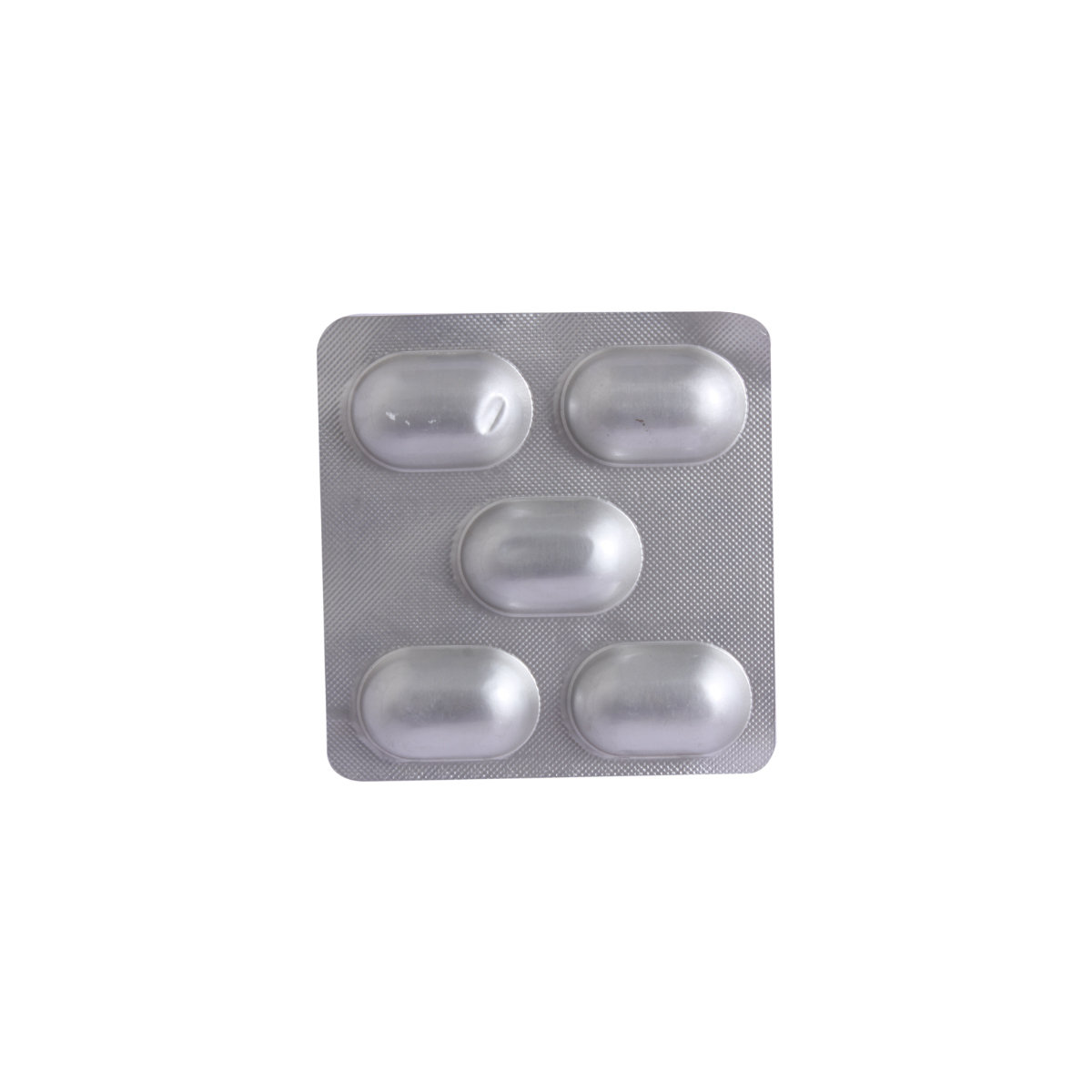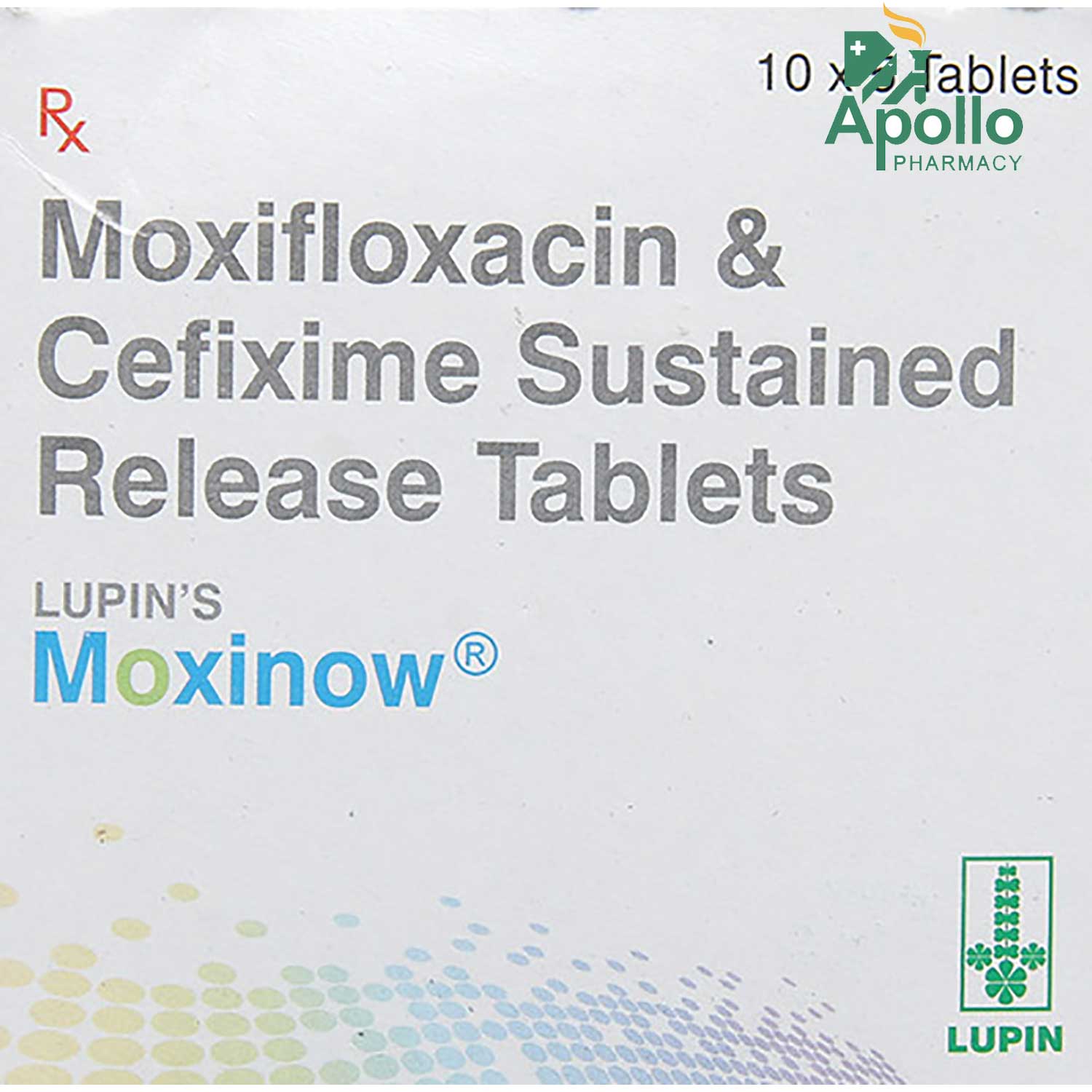Cefixime+moxifloxacin
About Cefixime+moxifloxacin
Cefixime+moxifloxacin belongs to the class of medications called ‘antibacterial’ primarily taken to treat various bacterial infections of the ears, lungs and urinary tract. Infectious or harmful bacteria can make you sick and reproduce quickly in your body. These harmful bacteria produce chemicals known as toxins, which can damage tissue and make you sick.
Cefixime+moxifloxacin is a combination of two medicines: Cefixime and Moxifloxacin. Cefixime is a cephalosporin antibiotic that prevents the formation of the bacterial protective covering, which is essential for the survival of bacteria in the human body. Moxifloxacin is a fluoroquinolone antibiotic that stops bacteria from making a copy of their genetic material (DNA), thereby killing and stopping bacterial infection growth. Thus together, Cefixime+moxifloxacin treats the infection effectively.
Cefixime+moxifloxacin should be taken as advised by your doctor. Take this Cefixime+moxifloxacin in the dose and duration as advised by your doctor. Swallow it as a whole with a glass of water. Do not chew, crush or break it. Cefixime+moxifloxacin may be taken with or without food, but it is better to take it at a fixed time. Cefixime+moxifloxacin may cause common side effects like headache, dizziness, stomach pain, nausea, flatulence, and diarrhoea. These side effects need not require any medical attention. If it persists, please consult your doctor immediately.
Do not use Cefixime+moxifloxacin If you are allergic to it. Inform your doctor if you are using other prescription and non-prescription medicines. Before taking Cefixime+moxifloxacin, inform your doctor if you are pregnant/planning to get pregnant/breastfeeding. Cefixime+moxifloxacin should be used with caution if you have diabetes, low potassium levels, epilepsy or hypoglycaemia (low blood sugar), heart diseases, kidney diseases and liver diseases. Cefixime+moxifloxacin should be used with caution in clostridium difficile infection (inflammation of the colon caused by the bacteria clostridium difficile) and pseudomembranous colitis (swelling or inflammation of the large intestine).
Uses of Cefixime+moxifloxacin
Medicinal Benefits
Cefixime+moxifloxacin is a combination of two medicines: Cefixime and Moxifloxacin belong to the class of medications called ‘antibacterials’. Cefixime is a cephalosporin antibiotic that prevents the formation of the bacterial protective covering, which is essential for the survival of bacteria in the human body. Moxifloxacin is a fluoroquinolone antibiotic that stops bacteria from making a copy of their genetic material (DNA), thereby killing and stopping bacterial infection growth. Thus, Cefixime+moxifloxacin treats your infection effectively.
Directions for Use
- Cefixime+moxifloxacin is best taken before meals to improve absorption and reduce the chance of stomach discomfort.
- Follow your doctor's instructions on the dosage and timing of this medication.
- Swallow Cefixime+moxifloxacin as a whole with a glass of water.
- Do not crush, break, or chew it.
Storage
Side Effects of Cefixime+moxifloxacin
- Headache
- Dizziness
- Stomach pain
- Nausea
- Flatulence
- Diarrhoea
Drug Warnings
Do not use Cefixime+moxifloxacin If you are allergic to it. Inform your doctor if you are using other prescription and non-prescription medicines. Before taking Cefixime+moxifloxacin, inform your doctor if you are pregnant/planning to get pregnant/breastfeeding. Cefixime+moxifloxacin should be used with caution if you have diabetes, low potassium levels, epilepsy or hypoglycaemia (low blood sugar), heart diseases, kidney diseases and liver diseases. Cefixime+moxifloxacin should be used with caution in clostridium difficile infection (inflammation of the colon caused by the bacteria clostridium difficile) and pseudomembranous colitis (swelling or inflammation of the large intestine). Avoid drinking alcohol as it can cause excessive drowsiness with this medicine. It usually does not impair your ability to drive, but you should not drive if it makes you feel sleepy or dizzy.
Drug Interactions
Drug-Drug Interaction: Cefixime+moxifloxacin may interact with other drugs like antiarrhythmics (amiodarone, disopyramide), anticoagulants (warfarin, heparin), anticonvulsants (carbamazepine), anti-HIV (didanosine), anti-psychotic (haloperidol) and anti-histamine medication (astemizole).
Drug-Food Interaction: Avoid high-fat meals, making it harder for your body to absorb Cefixime+moxifloxacin. Eating grapefruit during antibiotics treatment can prevent the body from utilizing Cefixime+moxifloxacin properly. So, prevent intake of grapefruit or grapefruit juice with the antibiotic. Avoid taking much calcium-enriched foods and drinks as it might affect the working of Cefixime+moxifloxacin.
Drug-Disease Interaction: People with diabetes mellitus, renal dysfunction, liver disease, seizure disorders, low potassium levels, hypoglycemia (low blood sugar), heart diseases, and pseudomembranous colitis.
Drug-Drug Interactions Checker List:
Safety Advice

Alcohol
cautionCefixime+moxifloxacin may cause unpleasant side effects. So please consult your doctor before taking Cefixime+moxifloxacin.

Pregnancy
cautionCefixime+moxifloxacin may be unsafe to use during pregnancy. Your doctor will weigh the benefits and any potential risks before prescribing this medicine. Please consult your doctor before taking your Cefixime+moxifloxacin if you are pregnant.

Breast Feeding
cautionCefixime+moxifloxacin is probably unsafe to use during breastfeeding. Your doctor will weigh the benefits and any potential risks before prescribing. If you are breastfeeding, please consult your doctor before taking your Cefixime+moxifloxacin.

Driving
cautionYou might experience side effects from Cefixime+moxifloxacin that would impair your driving ability. You might feel lightheaded or woozy after using Cefixime+moxifloxacin, you might briefly lose consciousness, or you might suddenly lose your vision. This might impair your ability to drive.

Liver
cautionCefixime+moxifloxacin should be used with caution in patients with liver disease. A dose adjustment may be needed. Please consult your doctor before taking Cefixime+moxifloxacin.

Kidney
cautionCefixime+moxifloxacin should be used with caution in patients with kidney disease. A dose adjustment may be needed. Please consult your doctor before taking Cefixime+moxifloxacin.

Children
cautionCefixime+moxifloxacin to be used with caution in children below 12 years. Your doctor will decide the dose of Cefixime+moxifloxacin based on your child's condition and age.
Habit Forming
Diet & Lifestyle Advise
- Probiotics should be taken after taking the full course of Cefixime+moxifloxacin to restore some of the healthy bacteria in the intestines that may have been killed. Taking probiotics after antibiotic treatment can reduce the risk of antibiotic-associated diarrhoea. Certain fermented foods like yoghurt, cheese, sauerkraut, kombucha and kimchi can restore the good bacteria of the intestine.
- Include more fibre-enriched food in your diet, as it can be easily digested by your gut bacteria, which helps stimulate their growth. Thus, fibre foods may help restore healthy gut bacteria after a course of antibiotics. Whole grains like whole-grain bread and brown rice should be included in your diet.
- Avoid taking too much calcium, iron-enriched foods and drinks as it might affect the working of Cefixime+moxifloxacin.
- Avoid intake of alcoholic beverages with Cefixime+moxifloxacin as it can make you dehydrated and affect your sleep. This can make it harder for your body to aid the Cefixime+moxifloxacin in fighting off infections.
Special Advise
- Take adequate rest for a faster recovery, take a healthy diet and drink plenty of water.
- Take Cefixime+moxifloxacin with food to avoid an empty stomach.
- Do not skip any doses and finish the full course of treatment, even if you feel better. Stopping it early may make the infection come back and harder to treat.
Patients Concern
Disease/Condition Glossary
Bacterial Infections: Bacterial infection is a condition in which harmful bacteria enter, multiply and infect our body. It can target any body part and multiple very quickly. Some bacterial infections are abdominal infections, chronic bronchitis, respiratory tract infections, urinary tract infections, eye infections and gonorrhoea.
Abdominal infections: Abdominal infections lead to symptoms like fever, belly pain, chest pain or shoulder pain, lack of appetite, nausea and vomiting, change in bowel movements, and rectal tenderness or fullness. Some abdominal infections include peritonitis (inflammation of the membrane lining the abdominal wall and covering the abdominal organs), diverticulitis (inflammation of pouches that can form in your intestines), cholecystitis (inflammation of the gallbladder) and cholangitis (inflammation of the bile duct system).
Chronic bronchitis: It is long-term inflammation of the bronchi. It is common among smokers. Symptoms include coughing, wheezing and shortness of breath.
Respiratory tract infections: Respiratory tract infection (RTI) is any infectious disease of the upper or lower respiratory tract. Upper respiratory tract infections (URTIs) include the common cold, laryngitis, pharyngitis/tonsillitis, acute rhinitis, acute rhinosinusitis and acute otitis media.
Urinary tract infection (UTI): Urinary tract infection (UTI) is an infection in any part of your urinary system: kidneys, bladder, ureters and urethra. Symptoms include a strong, persistent urge to urinate, a burning sensation when urinating, passing frequent and small amounts of urine, and urine that appears cloudy.
Gonorrhoea: Gonorrhea is an infection caused by a sexually transmitted bacterium that infects both males and females. It often affects the urethra, rectum or throat. In females, gonorrhoea can also infect the cervix. Gonorrhoea is most commonly spread during vaginal, oral or anal sex. Symptoms include painful urination and abnormal discharge from the penis or vagina. Men may experience testicular pain, and women may experience pain in the lower stomach.
FAQs
Cefixime+moxifloxacin is used to treat bacterial infections of the ears, lungs and urinary tract.
Cefixime+moxifloxacin is a combination of two medicines: Cefixime and  Moxifloxacin. Cefixime is a cephalosporin antibiotic that prevents the formation of the bacterial protective covering, which is essential for the survival of bacteria in the human body. Moxifloxacin is a fluoroquinolone antibiotic that stops bacteria from making a copy of their genetic material (DNA), thereby killing and stopping bacterial infection growth. Thus together, Cefixime+moxifloxacin treats your infection effectively.
Cefixime+moxifloxacin may cause common side effects like headache, dizziness, stomach pain, nausea, flatulence, and diarrhoea. These side effects need not require any medical attention. If it persists, please consult your doctor immediately.
Cefixime+moxifloxacin cannot be stopped suddenly, even if you feel better. Please complete the course of Cefixime+moxifloxacin. Discontinuing the Cefixime+moxifloxacin might result in recurring infection or not curing the infection completely.
Do not take Cefixime+moxifloxacin with antimalarial drugs. When taken together,Cefixime+moxifloxacin and antimalarial drugs might cause harmful side effects such as increased heartbeat or other serious heart problems. So please consult your doctor before taking Cefixime+moxifloxacin with an anti-malarial drug.
Cefixime+moxifloxacin should be used with caution in diabetes, low potassium levels, epilepsy or hypoglycemia (low blood sugar), heart diseases, kidney diseases and liver diseases.
Inform your doctor if your symptoms are not relieved after completing the full course of Cefixime+moxifloxacin. If you notice any undesirable effects that bother you while taking Cefixime+moxifloxacin, consult your doctor.
You are not recommended to stop taking Cefixime+moxifloxacin even if you feel better, as you may experience unwanted side effects. Take Cefixime+moxifloxacin as long as advised by a doctor for the effective response. However, contact a doctor if you have any concerns.
If you miss taking a dose Cefixime+moxifloxacin, then take it as soon as you remember and if it is the time for the next dose, skip the missed dose and continue with the regular dose. Avoid taking more to make up for the missed one.
Yes, Cefixime+moxifloxacin may cause diarrhoea. It is not necessary for everyone taking Cefixime+moxifloxacin to experience this side effect. Therefore, please contact a doctor if this condition persists longer after taking Cefixime+moxifloxacin.




